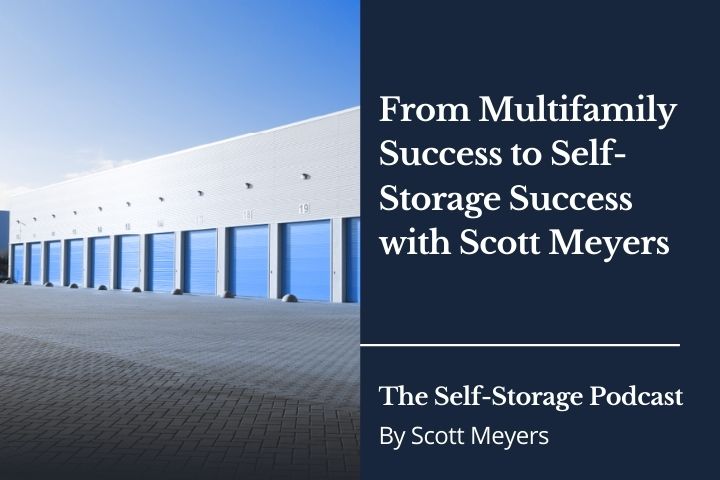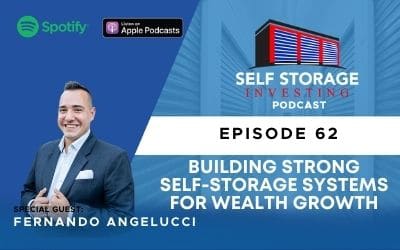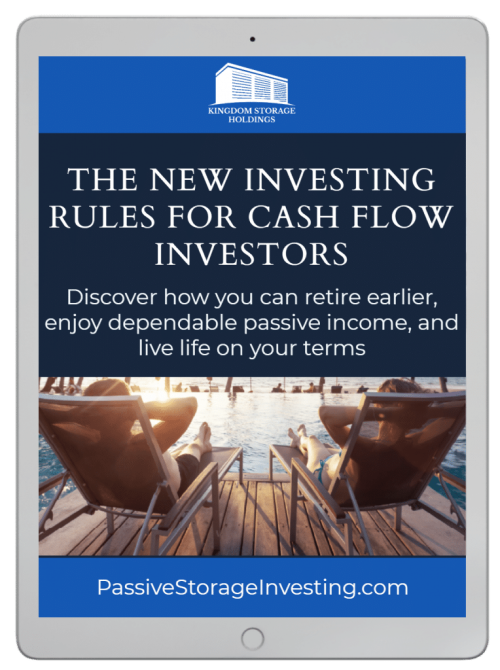In this episode, Tim Lyons, co-founder of Cityside Capital shares his journey of being actively passive in real estate investing. He does this while working as a New York City firefighter and being a father of three.
He’s the New York City firefighter with the massive side hustle.
WHAT TO LISTEN FOR
Why it’s so important people learn about real estate investing to navigate the overwhelming options available
The value of trust and due diligence in an era of skepticism
The luxury of being “actively passive”
ABOUT TIM LYONS
Tim is the co-founder and Managing Partner of Cityside Capital along with his brother Greg. Cityside Capital has partnered in over $1.4 billion of commercial real estate assets including more than 6,000 multifamily units.
Tim is also an 18-year veteran of the New York City Fire Department (FDNY) and currently serves as a lieutenant in the borough of Queens.
Additionally, Tim is the co-host of The Passive Income Brothers Podcast with his brother Greg.
CONNECT WITH TIM
- Cityside Capital website https://citysidecap.com/
- Email tim@citysidecap.com
- Phone 516-521-7762
- Twitter @Tim_CitysideCap
- On LinkedIn https://www.linkedin.com/in/tim-lyons-cityside-capital/
CONNECT WITH US
- Website: https://www.selfstorageinvesting.com/
- Facebook: https://www.facebook.com/selfstorageinvesting
- Twitter: https://twitter.com/SelfStorageGuy
- LinkedIn: https://www.linkedin.com/in/scottameyers/
- Youtube: https://www.youtube.com/user/SelfStorageInvesting
- Instagram: https://www.instagram.com/self_storage_investing/
Follow so you never miss a NEW episode! Leave us an honest rating and review on Apple or Spotify.
Episode Transcript
Tim Lyons (00:00):
Yeah, I mean at the end of the day, I love being a firefighter for New York City. Before I was in real estate, I was an ER nurse at a level one trauma center. So I had two jobs where people generally respect what you do if you’re a firefighter or a nurse, like, wow, that’s pretty cool.
Announcer (00:19):
This is The Self-Storage podcast where we share the knowledge and skills from the industry’s leading investors, developers, and operators to help you launch and grow your self-storage business. Your host, Scott Meyers, over the past 16 years has acquired, developed, converted and syndicated over 2 million square feet of self-storage nationwide with the help of his incredible team at Self-Storage and besting.com, who has helped thousands of people achieve greatness in self-storage.
Scott Meyers (00:53):
Hello everyone, and now welcome to the Self-Storage Podcast. I’m your host at Scott Meyers, and today’s guest is at Tim Lyons. Now, Tim is no stranger to the passive income side of the business, being on both sides of it, raising it, and also investing himself. And he and I have had a couple of conversations now with his partner with the Passive Income Brothers and on their podcast as well. And so I thought it was only fitting that we have, I guess, an extended version of that conversation over here on our podcast. So I was very thankful. Tim does have a full-time job in addition to investing passively. So he a very busy guy, father of young kiddos as well. And so just, I’m thankful to have him on the call here. Tim, welcome to the Self-Storage Podcast.
Tim Lyons (01:35):
Scott, thank you so, so much for having me. Pleasure to be here.
Scott Meyers (01:39):
Well, Tim, we were chatting a little bit before this podcast episode, a little bit more about what you do and in your bio for everyone, but if you would fill in the gaps, if you would in that. Let us know what you’re doing right now and how you’re approaching this ever-changing market that we’re heading into right now.
Tim Lyons (01:55):
So Scott, I like to joke that I’m actively passive. So I’ve started my investment company, Cityside Capital. We are a registered representative of a broker dealer, that’s a fancy term for we raise capital for real estate opportunities in multi-family, self-storage, industrial, triple net leases. And the broker dealer piece is just like Fidelity or Vanguard or Goldman Sachs. Instead of being involved in stocks, bonds, ETFs, we’re involved in commercial real estate offerings for passive investors, 10 31 exchange investors and also institutional investors like pension funds and stuff like that. So in addition to that, I also work as a New York City firefighter. I’m a lieutenant in Queens. Been doing that 18 years. And like you mentioned, I’m also a dad of three girls, so there’s no secret why I got into real estate. So basically where we’ve been is we’ve been doing this maybe almost four years.
(02:50):
We’ve now partnered with our partners through the broker dealer on about a billion and a half of mostly multi-family, about 6,000 doors. And we’ve raised capital from retail investors, 10 31 exchange investors, and basically really educating folks on what’s available to them. When I got into this space, I didn’t really know much about how to get started into real estate and it could be overwhelming. Where do you start with Google? Do you start with Barnes and Noble Amazon Books? I mean podcasts, there’s just so much to take in and not enough people know where to start. The people who do want to be in real estate. Cause I think deep down, Scott, a lot of us know that our portfolio should have something in real estate, but if we’re full-time employees or we have our own business and we have our kids and we have responsibilities, not everybody wants to deal with what we call the three T’s, toilets, termites and tenants.
(03:51):
But then again, not everybody knows that there’s passive vehicles out there. And even if you do know about passive vehicles, Scott, where do you start? How do you know who to trust? In the era of Enron and Bernie Madoff? Everyone, especially New Yorkers like myself, you’re guilty till proven innocent. I don’t really trust anybody. So that’s really where Greg and I, who’s my brother, he’s my partner in Cityside Capital, that’s where we saw that we could add a ton of value to the spaces by having that licensure, having the due diligence, having the background checks, having the in-house underwriting team so that when we go out to our investors and say, Hey, look, we put eyes on this, these are our partners, this is the deal. This is why we believe in it, this is why we are investing in it. People can feel like, you know what? I am so busy as a surgeon, as a small business owner. I don’t maybe have the time the knowledge, didn’t know how to really dive in, Tim and Greg do. But now since they said it that this is maybe an opportunity I should look at now. I’ll open the email now, I’ll hop on a call.
Scott Meyers (05:02):
So Tim, we’ve had a number of syn indicators on this show and we have done a fair amount of syndications as well. I think you’re the first person that we’ve had on that is actually a registered who’s taken that, the NEX step. So first of all, let’s talk through that process and then I have a couple other follow up questions.
Tim Lyons (05:21):
So we have our series 82 and our series 63 licenses from finra. So if that sounds like gibberish, if you’re a stockbroker, you’ll have the series seven exam under your belt. Our exam is just really for private placement offerings, which direct real estate is called a direct participation program because not only do you share in the cash flow, but you can share in the other losses like depreciation is passed on rata based upon how much money you invest. So because we did that, we wanted, the reason why we did that, Scott was really twofold. Number one was credibility. I think in today’s very skeptical and polarized society, people want certainty, clarity, and confidence with people that they’re investing with or alongside of and those licenses and being a part of a broker dealer, that was certainly credible. Number two is you cannot raise money and get paid for it if you’re not licensed with the caveat being like if you’re like you Scott, and you have your own company, you’re doing your own deals, you can use the Reg D exemption and with a 5 0 6 B offering or a 5 0 6 C offering, and you can raise as much money as you want, right, because you have a material participation in that offering.
(06:43):
But there’s a lot of people out there, or I’ll say, I’ve heard that there’s a lot of people out there that raise capital by basically speed dating sponsors and trying to get a piece of the GP or getting paid for racing capital is just simply not the way to do it. They’re essentially selling securities without a license. So once I heard that, I was like, well, sign me up for the licenses because I’d rather not have my door kicked in by at 3:00 AM by the federal agents. But those are the two main reasons why we got into what we’re doing.
Scott Meyers (07:16):
So in addition to that, and that makes a hundred percent sense, you have to also put yourself out there. You and Greg have done a very good job of becoming influencers and also gathering a tribe of people that know and trust you. It’s one thing to have a license, but then you know, do have to market yourself, so to speak. So let’s talk about the beginnings of that and some of the strategies you use to be able to get your name out there so that people who don’t know and trust you and can understand, or at least a sense that you have integrity and that they should put their money with you.
Tim Lyons (07:51):
Yeah, I mean at the end of the day, I love being a firefighter for New York City. Before I was in real estate, I was an ER nurse at a level one trauma center. So I had two jobs where people generally respect what you do if you’re a firefighter or a nurse. Wow, that’s pretty cool. So basically I was like the every man, I was the every everyday average guy and if I can do it, why can’t other people do it? And so I just decided to really tell my story, paved the way for other people, Hey listen, this is how I did it. This is what the struggles that I’ve had, this is the successes that I’ve had. This is where I was scared, this is where I had some trouble. How did I get educated? What resources did I use? Who did I rely on for information?
(08:37):
And by doing that and getting onto podcast early, even though I still suffer from imposter syndrome, Scott, I still can’t believe I am where I am today. That has opened up so many opportunities for phone calls, for meetings, for dinners, for lunches, traveling across country to meet people. I mean, my brother Greg and I are sometimes pinching ourselves like, dude, are we really going to Phoenix to meet these people? But being out there and telling my story and listen, I’m not perfect on social media. I’ve tried to do it myself. I’ve tried to hire people like I’m still trying to figure it out myself. But by just being out there and telling the story, I think I’ve connected with so many people because of that.
Scott Meyers (09:24):
And it is a tenure game. The longer you’re at this and the more deals you do in the history and the track record of performance you have behind you, and then without promoting, but also making sure that you are out there and just saying, Hey, not look at what we’ve done, but look at what this investment that we invested in had done and here’s how we went about it. That’s how you gain a number of folks that maybe following you for months and maybe even years before they invest with you. But it seems to me that more, not necessarily the performance, but the longer that we’ve been doing this, and especially since we’ve been at this for well real estate for 30 years and self storage for 18 where we raise capital now, we’ve been through two recessions now, and folks tend to like that to see that we’re not only still around, we survived, but that we came through those as well.
(10:10):
And so I think it makes it a little bit easier, but we’ve gone to these family office events and the number one piece that people are looking for and investing with somebody is integrity. They’re looking more to the jockey than the deal itself, and they’re looking at the integrity of the jockey. And so clearly you and Greg have done a very good job of that, of not only a performance, but the integrity of the jockeys has been in. Incredible. So let’s talk about these folks that you’re meeting with now. I think well all syndicators start where everybody starts at the same place, which is we’ve got our friends and family and it truly is friends and family money that we’re looking at in the beginning, but then the friends become other folks that are part of our followers that continue to show up for our webinars and are part of our LinkedIn groups and database that we’re sending information out to. But eventually, if you’re looking to grow, you want to receive the bigger checks from the family offices, from sovereign wealth funds, from other different funds that are coming into the various asset classes that we’re investing in. How have you bridged that gap and what does that look like in terms of your efforts recently in pursuing some of the folks that can write the larger checks?
Tim Lyons (11:24):
Well, I’m glad you brought up integrity to start that little rift because I mean, look, at the end of the day when I told you that I don’t trust a lot of people, you’re guilty to have proven innocent with money. It’s how people feel about their money, or at least people that I’ve come across. So then I invest my money, I have proof of concept, I have my friends and family, but eventually you run out of friends and family, Scott that are willing to willing or able to invest with you. And that’s when you know grow into people, hear you on podcasts or people that you network with then. But the responsibility that I feel with my brother, Greg, not only for our own capital but for our friends and family’s capital, it’s like it’s infinitely larger and then all of a sudden you’re meeting people that you don’t even know and you’re developing a relationship with them and get to know their family or you get to know their story and they’re successful because they haven’t been dealing with people that suffer from no integrity and now you feel an even greater responsibility to protect them.
(12:28):
And little by stacking these little tiny winds on top of each other, we’ve been able to grow this business by just doing that. Being responsive to investors. I mean, look, we’re in an uncertain time right now. Are we in a recession? Are we not? Are we going for a hard landing, soft landing, no landing? I mean it can be nauseating, but I tell myself that I need to be in the pilot seat and understanding where we’re going, what we’re doing, and communicate that out to investors. Here’s what we’re seeing. This project is going well, this project is going this, we’re doing this type of distribution. This is why. Here are the financials. Let’s hop on a call. The more information we can overcommunicate to investors, it’s just like anything else. I mean, if you gave your dog to somebody to babysit while you went on vacation, would you want to hear silence for a week?
(13:22):
Or would you want to maybe hear about how the dog is doing? Same thing with our money, and that sounds like a terrible analogy, but still, you know, want to hear what’s going on. And that’s kind of where we were able to stack those little wins. And then listen, when somebody finds something that they tell a friend and that friend, then they tell a friend and then all of a sudden about a year ago, we’re sitting in a zoom call with a pension fund from a major city. And that’s just how it goes. Because people like to do business with people that they know I can trust. And I don’t tell you, Scott, you’ve been doing it for way longer than I have, but that’s just the way, when you treat people the way that you want to be treated, especially you look out for their wellbeing and their finances, that’s really the number one ingredient to run a business like this.
Scott Meyers (14:12):
Tim, you touched on being in invested in as the promoters, the sponsors of these private placements. Our investors always want to see that we have skin in the game. And I like to ask this question just to find out, well first of all, just to test the market again to see if my investor, my investors are investment pool is any different than anybody else’s out there. And we’ve always been of the mindset that I wouldn’t ask somebody to invest more than what I have invested in a project in terms of dollar per dollar. Everything else aside, depending on the project. Let’s say I am guaranteed the loan and I’m doing all the legwork. I sourced the deal and I found everything else, and we’re going to do everything else to take it from build the value in it from A to Z. Investors could say, yeah, okay, that’s great, but what kind of pain are you putting into this?
(15:01):
What kind of skin in the game are you putting in? If you’re asking me for a $50,000 as a minimum, Scott, are you in for $50,000 or more? Or where are you at? And by and large, not much has a change. Folks are still looking for that. Some folks don’t mind, some people just don’t ask. But we would rather not get for far down the road and talking with multiple investors that will than determine or find out that Scott’s only got 10 grand in this or 25,000 and he’s asking a hundred thousand is a minimum to get into this project. I’m out. He doesn’t have as much to risk, even though we’ve got our credit and our reputation, everything else, which is far greater. So all that to say, how have you approached that? Has it been the same from the beginning and does it change by deal? Or what is your approach to your skin of the game, aside from bringing the deal and everything else that you do?
Tim Lyons (15:50):
I would say it’s a great question. I would say for the first year or so, that was a big question. Hey, how much are you putting into the deal? What’s your pain in this deal? And that was something I struggled with because I felt like, not that it’s an unreasonable question cause you want to know that the operator or whoever’s putting the deal together, they have skin in the game. And I totally understand that. But once people understood that we were broker dealers, that we were registered reps up a broker dealer, they kind of found us in a different channel. Cause we weren’t the operator doing the acquisition and putting the deal together per se, so that if they found us through the broker deal channel, I found that those questions were basically non-existent. Or they wanted to know how much were the operators, our partners, how much were they putting into the deal?
(16:41):
And not so much about myself and Greg, but in the beginning I would say the first three deals that we did, those were just joint ventures. They wanted to know what were we redoing. And I get it, especially for the first time investor who is just getting to know this asset class, they just found out it was kind of available to them. They’re still learning, still trying to figure it out. And I think there’s a certain level of comfort knowing that they’re standing in line right next to Scott and Tim because they put the same amount of money in. But I do agree that you just, the education piece of, like you said Scott, like a key principle. Well what’s the role of a key principle? What is the role of a loan guarantor? What are they putting at risk? When people start to understand the process and some of the pieces to an offering like this, they go, oh wow, okay, now I get it. So it’s not so much dollars and cents, but also just letting people know what exactly each person’s role and why they do it and how it works. I think it’s a pretty powerful stuff.
Scott Meyers (17:48):
Well, appreciate that because I’m curious as to what that looked like on your end being registered. Because I, I’ve taken the approach with our brokers when they bring a project to us so many times, they’re explaining what a fantastic opportunity this is. And they’ve been saying for years that they wanted to get into self storage. I said, well here, here’s your opportunity. Why are you bringing this to me? Why aren’t you buying it? And knowing they get a commission and essentially you’re getting a fee for this as well. But at the same time, I’m kind of prompting them and promoting them to get into ownership of one. But at the same token, why don’t you put some skin in the game and here’s your opportunity to do so. But you also brought up another, a good point when you’re talking about rules and responsibilities in the deal.
(18:29):
So what do the sponsors look like in their team? And as we head into projects and look at the general partner side in terms of where we fit and maybe some significant contributors to a project who either want a seat or deserve a seat at that table on the general partner side versus limited partner, how do you structure these and what are the roles and responsibilities more importantly for you and Greg? We’re one thing for ownership percentage, but the more important thing is the list of roles and responsibilities to make sure that everybody stays in their lane so that everybody’s happy. At the end of the day, we’re not stepping on each other’s toes and ending up in a partnership divorce. So how have you structured that in terms of your partnership with Craig to make sure, I mean you’re always going to be brothers, but whether you’re on good terms or not is up to you. But how have you structured those roles and responsibilities, and then what does that look like as you carried into the projects you invest in?
Tim Lyons (19:27):
So it’s funny because we sat down with our attorney a couple years ago when we were creating the operating agreement for Cityside Capital and we were going through all this kind of stuff. How are you guys going to solve a deadlock decision? And well, I don’t know, attorney, you tell us what are some of the choices? And I remember one of the choices was a coin flip. I was like, are we really going to do a coin flip for a tiebreaker? So anyway, maybe we
Scott Meyers (19:56):
you wrestle when you were kids or arm wrestle or do something.
Tim Lyons (20:00):
Yes, I’ll have that. Greg broke my collarbone twice, one on each side while we were growing up. But I love him and I forgive him. But so we listen, before I got into business with Greg, basically he and I had been aligned on some of this stuff. And our values are very similar for the longest time. So when we had the opportunity to circle the wagons and work together here, it was a very easy kind of thing to get into. But knowing that we were both really involved, we wanted to parse out whose roles were going to be, what our responsibilities were going to be, how much time mean he has kids. I he has a job, I have a job. We didn’t want to get into that. Well, you know, did this and I did that. You know, owe six hours to the business, wasn’t what we were about.
(20:57):
But we really kind of decided what is our strong point and what is he strong at? And it kind of just evolved over the last couple years and it’s been a dream. The one fight we’ve had, Scott is a couple, when we were first getting started and we did a direct mailing to a bunch of small maltis across the country and the markets that we were looking at and we got a hit and this guy wanted to sell and he’s like, I can’t find you guys anywhere. You have no website, you have no online presence, you have nothing on social media. So for those reasons, I’m out. And I remember calling Greg, I was in a duck and donut’s drive through getting my morning coffee and I go, dude, I’ve been telling you that we need a website. We had a whole fight about a website. That’s the only fight I’ve ever had during this whole journey. But carrying that into, carrying that into what we do now with our operators, everything’s memorialized, everything’s agreed upon before we get into any sort of deal. And that just has to be in business sometimes. Just like our operating agreement for Cityside Capital, he’s my brother and I love him. But everything is written, everything’s memorialized in an agreement. Everybody signed it. It is what it is.
(22:14):
So basically the way that our broker dealer is compensated for bringing equity to these deals is that there’s an agreed upon fee, the cost of capital, if you will, for these operators. They can all raise tens of millions of dollars by themselves. They don’t particularly need a broker dealer. But listen, their zone of genius is acquisitions, asset management, property management, disposition, all those things. They may not love investor relation or they may not love the capital raising process as much as they love doing those other things. So for us, it’s very easy to step into that role and bring those responsibilities and agreeing with them, Hey, what does that look like to work with the broker dealer? What is the carried interest on the backend? What’s the upfront fees? And then being very clear in the PPM and sub docs for investors to see that, look, this is a private placement with XYZ company that we partner with. Here are the fees, here’s how it works, here’s our interest. And being very transparent. Cause I get a lot of times they’ll say, Hey listen, if I invest a hundred thousand dollars, Tim, am I going to have a capital account that shows 95,000? Well no, right, you’re going to have, if you invest a hundred thousand, your capital account is going to show a hundred thousand. The cost of capital for working with us is on the operators
Scott Meyers (23:40):
Along the way. It looks like you’ve realized so early on. But along the way we recognize that there was a shift and we had gone from being primarily what we considered ourselves as self-storage developers or conversion specialists or acquisition specialists. And our organization morphed into a financial services company that deployed capital, that invested in nothing but, and so we had to start thinking a little bit differently and we knew the basics of operating agreements and partnerships early on, but then over the years we recognized that most disputes that we would have with partners, with joint venture partners, with our limited partners are usually the result of all, I’d say, greater than 90% of expectations that weren’t met because they weren’t communicated to begin with. And so that’s what our attorneys do and that’s why operating agreements are very extensive. And the private placement documentation from the S E C is very extensive because it’s a result of all the lawsuits for people that didn’t communicate and there were unmet expectations that were uncommunicated as well.
(24:46):
And so you can’t do that enough. And to be honest with you, Tim, that was freeing. The more that we got into it and embrace that, the more we recognize that you avoid conflict when that happens anyways, whether it’s with you and your brother, you can just say, Hey, don’t not forget the operating agreement and here’s my role and responsibilities, here’s yours, stay in your lane. And so if you want to discuss these items that that’s great. However, this is the way it’s going to be because we agree to it and it diffuses those situations. And the same thing with anything that usually comes up with limited partners as well. Having those docu, that documentation in place is just a key to making sure that their relationship to run smooth because nobody wants a partner divorce or a anybody trying to vote the managers of the syndicators off the island.
Tim Lyons (25:32):
Nobody wants that. No. And unfortunately, Scott gone are the days of the handshake riman, right. Well you shook my hand and remember that time we were having dinner and you shook my hand. I mean, look, I, I’d love for those days to come back, but until they do, let’s just write it down and then when we write it down and we’ll all sign it, it’s all good.
Scott Meyers (25:50):
There was a book that Ron Cherno who wrote about Titan and Rockefeller, and he also wrote The House of Morgan and incredible author that wrote about the Robert Barons and the Titans at the turn of the century. And although unfettered capitalism isn’t always the best way to allow commerce to continue in an economy, there was a piece of that when I was reading the House of Morgan when he would have those business dealings on his boat out there in the harbor in New York, and it was done on a handshake and it worked just fine. And yeah, it is unfortunate that there isn’t that level of trust and that there’s so much mistrust that we have to paper over everything. But aas we are a sinful people and left to our own devices, eventually that’s going to happen. Well, let’s talk about what you’re doing in the market right now, Tim. So it sounds like you’re, for the most part, asset class agnostic. What are you fancy in the economy today that you’re chasing after?
Tim Lyons (26:51):
Yeah, I mean I just want to invest where the numbers make sense. And listen, we are in the Sunbelt, but we’re also in small little markets in Michigan and Indiana and Ohio, a little bit in Tennessee. And people sometimes when you first get into this, they can’t wrap their heads around, well, if you live in New York, Tim, how do you invest in Austin? Right? You want to drive past the property, touch it, feel it, whatever. And the answer is no, I don’t. I do sometimes just to go see. But so right now, I mean what we’re focused on is our investing thesis is look, we believe that people need food, clothing, and a place to live first and foremost. So we spent the majority of our time on multi-family. With that being said, we also see tremendous value for self storage. And when we were talking on our podcast last week or two weeks ago, Scott, you know, ate out a great case for why your investing thesis for self storage was what it is.
(27:47):
And after that, Greg and I were really talking and we dove through some of our documents for our self storage fund that we’re raising capital on, and we really red redoubled our efforts speaking about the self-storage funds and some of our investors who are looking to deploy capital. We also just want to go where the numbers make sense. So what does that mean when I say that? Obviously for multi-family, a population growth, job growth, household income, one, three and five mile development, what’s in the pipeline? What’s the absorption rate? There’s all these things that kind of come into play without just looking at the sexy pictures of palm trees and pools and fancy weight rooms and oh, that property looks so good, that’s not what we’re after. But at the same time we’re after clean, safe, affordable housing for folks out there. So our bread and butter right now is 1980s and newer because let’s face it, on 1980s, property is now 42 years old, 43 years old, I can’t even do public math.
(28:54):
So with that, there’s some deferred maintenance that comes with older properties. So seventies, sixties, I’m just not into it anymore, especially where we are at this point in the market cycle. So eighties and newer for multi-family. On the self-storage front, we work with an operator that does, when they buy properties, they buy something that has a development piece for the value-add plant. So whether that’s 20, 30, 40,000 square feet of extra buildable space, whether that’s in a market that supports RV or boat storage. So we will really look for those metrics, but also they have feasibility studies, what’s the absorption, what’s the price per square foot, what’s coming in the pipeline? So there’s a lot of due diligence that goes into that, but we still believe heavily in the self storage space. And then for a cash flow play, we are also doing industrial triple net leases for credit worthy tenants that are doing at least 90 to maybe a hundred million of revenue each year. So that’s really what we like a lot. I really try not to have shiny object syndrome with bill to rent or oil and gas or anything like that. So right now that’s what we’re focused on.
Scott Meyers (30:17):
Very good. Well, the market is shifting and we’ve seen industrial self storage kind of falls under industrial and sometimes it gets looped into that in terms of looking at market data, but the industrial sector and bringing manufacturing back here to our shores as well as then the distribution of that. And once again that the fight to go to the last mile, like Amazon is always talking about by all companies, not just Amazon. There seems to be once again, just an insatiable appetite for industrial and it seems to continue to go very well and be strong. But you’ve got Timmy, you’ve got a unique perspective in terms of being a passive investor and representing passive investors. So on behalf of myself and all of Storage Nation, those that are syndicating, we’re wondering, are we at the bottom? Are people beginning to invest Again? I hear some syn indicators saying at our passive investors, our list is opening up their purse strings again, and the activity level has jumped up. But I literally an hour and a half before we got on here at a friend of mine who was raising capital on a storage facility, just getting into self storage, he raised capital very quickly for his last facility and now this one is struggling, he can’t get, it’s a fairly small race. And so I don’t know if it’s his list size or if people are still taking a step back. Where would you say at the time of this podcast that we are in terms of maybe passive investor confidence in the market right now?
Tim Lyons (31:48):
I think there’s a dichotomy of for investors the they’re brand new or the one deal investors, they’re really scared and uncertain right now. So I think they are the ones that are either not ready to pull the trigger on the first deal or the second deal right now. They just want to sit there, they want to be in cash and they want to wait and see where the winds are going to blow. The money that we’re raising right now is from experienced investors. They’re having liquidity events, they’re doing 10 31 exchanges or they’re just, they’re high earners, they just continuously want to put money to work, but they’ve done it before and they’ve been through market cycles, they have the gray hair, so to speak. So those are the ones that we’re finding are still deploying capital. I would say that, look, I haven’t been doing it for that long, but our partners have been, and we’ve been on a ton of calls just like this, trying to figure out where are we are heading, where’s the puck going?
(32:44):
Let’s get over to it. So what we’re hearing anecdotally is that yes, there’s going to be some pain in the market for say there are people that bought in the last two, three years at the height of the market, some will claim and they bought with us usually commercial debt, different from residential, 30 year fixed mortgages is variable rate. And just 14, 15 months ago, the Fed was saying, we’re not thinking about raising rates. And then also they went on a tear of 10 rate hikes in a row and including a couple of 75 basis points at a time that torpedoed a lot of deals, especially if you did not have what’s called a rate cap, which is just an insurance policy that caps your interest rate at a certain percentage. So I think there’s people out there, I know there’s people out there because we’re buying their deals that either didn’t have the reserves, they ran out time or they ran out of money.
(33:42):
So short floating rate, debt terms, or not enough reserves and maybe not being able to really get their business plan into I gear. So maybe depended on where you were, you weren’t able to evict people or there’s a lot of that goes into this. So for example, we’re about to buy a large 250 plus unit deal in Dallas in the DFW area. We’d be going to be going live with it this week and we’re getting at a 20% discount from just two years ago, which arguably might be the height of the market, right? Because they got caught in this type of deal and they weren’t prepared with the cap and they got destroyed basically. So I think you’re going to see a lot of workouts underneath, behind the scenes I should say. I don’t think anybody wants to really take advantage of too many people bankrupt them or anything like that.
(34:37):
We don’t want to see investors lose equity. So I think the brokers do a nice job of trying to match buyers and sellers with off market deals, trying to get some of this worked out behind the scenes. But I also think that if what we believe on the mainstream media about this commercial real estate tsunami with regional banks having a big portion of some of the debt, I think there’ll be some workouts. I think there’ll be some terms, even the quote bailout, but I think there will be pain and there will be opportunity in the next, say 12 to 18 months.
Scott Meyers (35:12):
And that’s what we’re betting on as well. And we keep our ear to the ground and what we’re hearing is that, yeah, we will be seeing more opportunities coming out where folks, as you said, we’re not looking to take advantage of anyone, but there will be some opportunities for us to be able to purchase some properties, to do some joint ventures and partnerships to step in into an equity position and maybe make up for a shortfall and take a piece of some of these projects as well. But I think there’s going to be a little more movement as we head into the balance of this year. So beyond that, Tim, you and Greg haven’t been doing this very long. What does the model look like and what is the ultimate exit strategy for the two of you?
Tim Lyons (35:48):
That’s a great question, Scott. I think when we first got started, we wanted to see if this worked and then it did, and then we started building our list and creating a investor database. And when we first got started, I think we wanted to have a seasoned investor list that we could maybe take eventually and go do our own deals. But I have to be honest with you, I love being an actively passive investor. I love being in the seat where I am today because I get to see the behind the scenes, the underwriting, the due diligence, I get to see a lot of the stuff and we have the opportunity to work on some deals and maybe not work on others. And at the end of the day, I mean, I don’t have to tell you, being an active owner is a lot of work. I mean, I don’t care what you see on TikTok or Instagram or any of these social media sites or YouTube about real estates being this panacea of cash flow. It takes a lot of work. So I think for the long term, I love where I am today. I like being actively passive. I really like connecting with brand new investors, taking ’em on the journey with us. So I think I would be doing more of the same and just trying to see where the deals are and where the numbers make sense.
Scott Meyers (37:07):
So then where do you end? What is the exit for you and Greg? Is it to sell off a whole portfolio or is it a certain length of time, a certain number in mind, or is it still just, hey, let’s see what the market brings to us and then we’ll decide when we tap out, we tap out.
Tim Lyons (37:26):
Yeah, I mean listen, I’m going to be 41 next week. I got a lot of time left. I’m not sure. I don’t have a hard stop, I guess. So we’ll see where this goes. Yeah,
Scott Meyers (37:35):
Same here. Yeah, we have some kind of goals, short-term goals here and there, but can’t, retirement is not in the Bible and it’s not part of our lexicon. We’ll slow down a little bit, but as long as there’s air, my lungs and I can still get around and I can still understand real estate math, I think we’ll be doing this because it’s just too darn fun. So we’ll see. All right. Well, with that, my friend, Tim, thanks so much. Appreciate the time you had today and to give a glimpse into another side of investing in that real estate, I’ll, albeit passive, but active as well, and as a registered agent too. So we appreciate that. But before we go, what is perhaps maybe the greatest challenge that you’ve faced in your business and how did you overcome it?
Tim Lyons (38:19):
The greatest challenge was basically overcoming imposter syndrome. For the longest time, my identity was wrapped up in Tim Def fireman, Tim, the ER nurse. And sometimes it’s hard to break away and to get involved in people’s money and investing. Who do you think you are? What do you, Dave Ramsey, what do you think? You’re Robert who were you to start talking about? And that’s some of the feedback that I got early on from some of the people that maybe didn’t understand what I was doing, but it’s hard to keep on pushing through. But I’m glad I did because honestly, I mean just with the investors that have been with me for the last couple years, I mean, it’s been life changing for certain people. It’s, I’ve gotten to meet so many great people starting the podcast. I mean, I never thought I’d be a podcaster and just being able to connect so many great people. What I found Scott, was that in real estate, it wasn’t as cutthroat as I thought it might be. There’s always somebody, I always say someone’s always a little bit higher on the ladder than us, and they always have a hand down ready to pull us up a rung or two. And now I’m trying to do the same thing for people who are just getting started. So that’s been the biggest challenge.
Scott Meyers (39:36):
One of the beauties of this side of the industry is that we’re all very friendly competitors. And contrary to when I was maybe beginning, starting in the single family houses in my local market were, everybody was skeptical and then there was a race to get these houses here in this market. But once you get into commercial, and as you said, when we invest across the country, all of a sudden our friendly competitors, it’s very, very rare that we bump into each other in the marketplace. And everybody’s willing to share 90% or more of what they know their best business practices with your friendly competitors, your fellow friendly competitors, and maybe keep five to 10% close to your chest, which is fine. But when you’re part of a community that is sharing that much, all it does is just elevate all of us and it makes it a pleasure to do business that way. Anyway, so that’s because that’s the way all, in my opinion, all forms of life should be. We should always be willing to lift a hand or send a hand down to bring somebody else up to that next rung. And it should be that way in business as well. So that’s good to hear.
Tim Lyons (40:36):
Couldn’t agree more. Yeah.
Scott Meyers (40:38):
Well, Tim, what is the best way for people to get in touch with you and Greg to follow you as well as the podcast?
Tim Lyons (40:45):
Yeah, so our podcast is called The Passive Income Brothers podcast. The best way to connect with us is to go to a website, cityside cap.com, or you can call me at our phone number at (516) 521-7762.
Scott Meyers (40:58):
Tim is a pleasure catching up. Again, thanks so much for your time today.
Tim Lyons (41:02):
Thank you Scott Take care.
Scott Meyers (41:04):
Bye Now.
Announcer (41:07):
Hey gang, wait three things before you leave. First, don’t forget to subscribe to the Self-Storage Podcast and turn on your notification so you never miss another episode. And while you’re there, please leave us a five star review if you like the show. Second, be sure to share your favorite episodes and more via Instagram, and don’t forget to tag us. And lastly, head to the link to the show description and hit the following subscribe button on Twitter and Facebook to get a front row seat as we grow and scale our business and bring you along with us. Take care.















